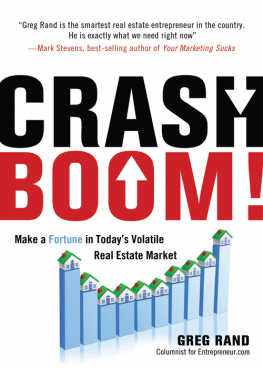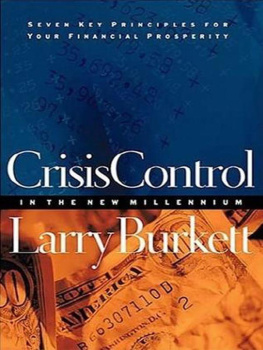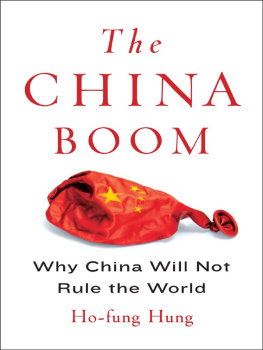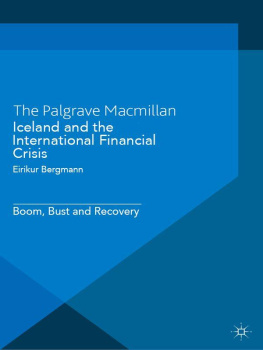

Credit: Andrew Popper
CHARLES R. MORRIS has written many books, including The Cost of Good Intentions, a New York Times Best Book of 1980; The Coming Global Boom, a New York Times Notable Book of 1990; The Tycoons, a Barrons Best Book of 2005; and The Trillion-Dollar Meltdown, winner of the Gerald Loeb Award and a New York Times Bestseller. A lawyer and former banker, Mr. Morriss articles and reviews have appeared in many publications including the Atlantic Monthly, the New York Times, and the Wall Street Journal. He is a fellow of the Century Foundation and a member of the Council on Foreign Relations.


PublicAffairs is a publishing house founded in 1997. It is a tribute to the standards, values, and flair of three persons who have served as mentors to countless reporters, writers, editors, and book people of all kinds, including me.
I. F. STONE, proprietor of I. F. Stones Weekly, combined a commitment to the First Amendment with entrepreneurial zeal and reporting skill and became one of the great independent journalists in American history. At the age of eighty, Izzy published The Trial of Socrates, which was a national bestseller. He wrote the book after he taught himself ancient Greek.
BENJAMIN C. BRADLEE was for nearly thirty years the charismatic editorial leader of The Washington Post. It was Ben who gave the Post the range and courage to pursue such historic issues as Watergate. He supported his reporters with a tenacity that made them fearless and it is no accident that so many became authors of influential, best-selling books.
ROBERT L. BERNSTEIN, the chief executive of Random House for more than a quarter century, guided one of the nations premier publishing houses. Bob was personally responsible for many books of political dissent and argument that challenged tyranny around the globe. He is also the founder and longtime chair of Human Rights Watch, one of the most respected human rights organizations in the world.


For fifty years, the banner of Public Affairs Press was carried by its owner Morris B. Schnapper, who published Gandhi, Nasser, Toynbee, Truman, and about 1,500 other authors. In 1983, Schnapper was described by The Washington Post as a redoubtable gadfly. His legacy will endure in the books to come.


Peter Osnos, Founder and Editor-at-Large
F orty years ago there was a seismic break in the geography of world power. A dozen countries that produced much of the worlds oilalmost all of them in the Middle Eastdeclared an oil embargo against the West. They were retaliating for the humiliation of the 1973 Arab-Israeli war, but also announcing their independence from the American and European global oil companies that had long controlled their production and prices. Oil prices tripled (from about $3 to about $10 a barrel), and the United States was plunged into the nastiest recession of that time since the Great Depression. Runaway inflation in the United States and a collapsing dollar prompted another tripling of oil prices in 1979 and the steep recession of 19811982.
The economic collapse combined with the end of oil price controls in the United States caused a sharp drop in oil demand, and oil prices dropped steadily through the middle 1980s. Memories of the crisis faded when prosperity returned in the 1990s, and the faux American boom of the 2000s brought a return of the old profligacy, as soccer moms ferried their kids in vehicles modeled after cattle-country pickups and Gulf War troop carriers. More and more of US manufacturing migrated overseas, and the trade deficit, about a third of it energy-related, went off the cliff. In the run-up to the 2008 financial crash and Great Recession, crude prices scraped $100 a barrel. Nightmare visions of a 1970s replay seemed all too plausible.
Behind the scenes, however, awareness was slowly spreading that the United States was swimming in inexpensive energy. As the reality of the American energy position sunk in, engineers stopped work on giant multi-billion-dollar natural gas importing facilities in Louisiana and Texas, and began reconstructing them to export gas. In the fall of 2012, the International Energy Agency (IEA) forecast that by 2020 the United States would surpass both Saudi Arabia as the worlds largest oil producer and Russia as the worlds largest gas producer.
The new American energy bonanza stems primarily from unconventionals, land-based hydrocarbon deposits that geologists have long known about but which were considered inaccessible on both technical and economic grounds. The unconventional energy bonus has also been supplemented by the steady expansion of the industrys deep-sea drilling capabilities.
Unconventional Hydrocarbons
Coal, oil, and natural gas all derive from decayed plant and animal matter that has slow-cooked within the earth for hundreds of millions of years. As dead organic material accumulated on the muddy bottoms of swamps, lakes, and oceans, the mud sank and was gradually compressed into sedimentary shale rock, trapping the organic matter within its many layers and fault lines. Compression generates heat, which gradually transformed the organic matter into ordered chains of carbon and hydrogen atoms. The simplest chain, one carbon and four hydrogen atoms (CH4) is methane, the premier heating gas, and one of the most abundant organic compounds on earth. The hydrocarbons that are used to manufacture gasoline are much heavier, with four to twelve carbon atoms and multiples of hydrogen atoms; those used to make diesel fuel are heavier still. The hydrocarbons favored for oil and gas production tend to be derived from the decay of phytoplankton in marine (saltwater) settings and of algae in freshwater lakes, while coal is thought to derive from swampy peat forests like those still found in some southeast Asian countries.
Shale is therefore called a source rockit traps and transforms hydrocarbons. By itself shale is nearly impermeable, but over the vast stretches of geologic time, liquid or gaseous hydrocarbons seep from between the shale layers into the surrounding earth. Conventional oil reservoirs form when a hydrocarbon-rich source rock leaks into a highly permeable medium like sand formationsthe reservoir rock. If there is another layer of shale over the reservoir, it will act as cap rock, sealing the seepage in the reservoir. Drillers harvest the oil or gas by sinking a pipe through the cap rock into the reservoir, and sucking it out as if with a straw. For traditional oil and gas exploration companies, the hard part is finding the reservoirs; although geologic surveying technology is improving at a rapid rate, most oil exploration efforts still end up with dry holes.
Shale, however, can serve as both a source rock and a reservoir rock. If the openings between the horizontal layers are wide enough it is always possible to leach out usable hydrocarbons. But the economics have been unattractive. Shale formations are often very deep in the earth, so drilling is expensive. Even in the best shale, hydrocarbons rarely make up more than 6 percent of the rock weight. And although shale formations often stretch over tens of thousands of square miles, theyre typically only a few hundred feet thick. Drilling that far down to access such a paltry area of shale, with such a small payload of hydrocarbons, made no sense.















